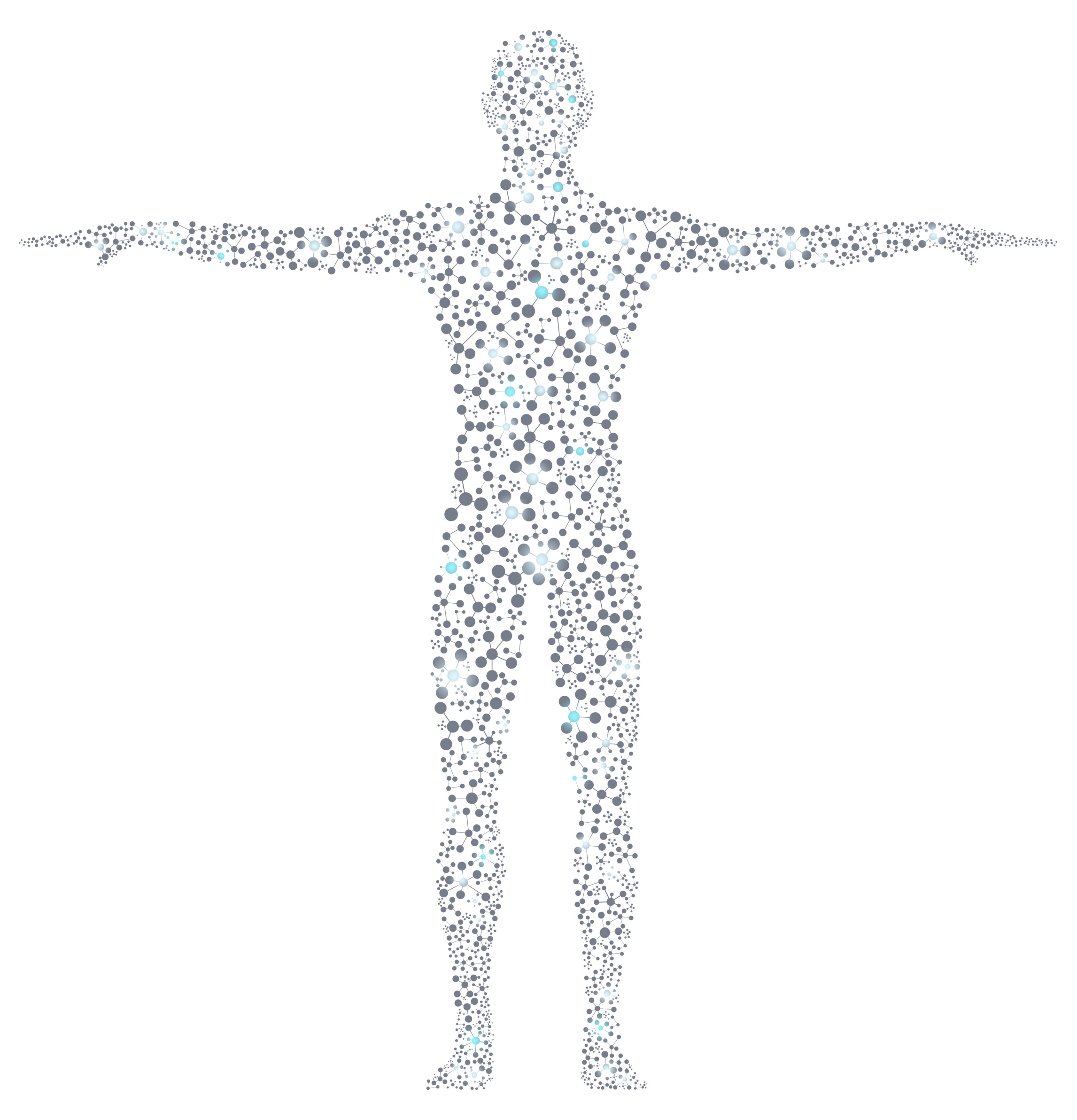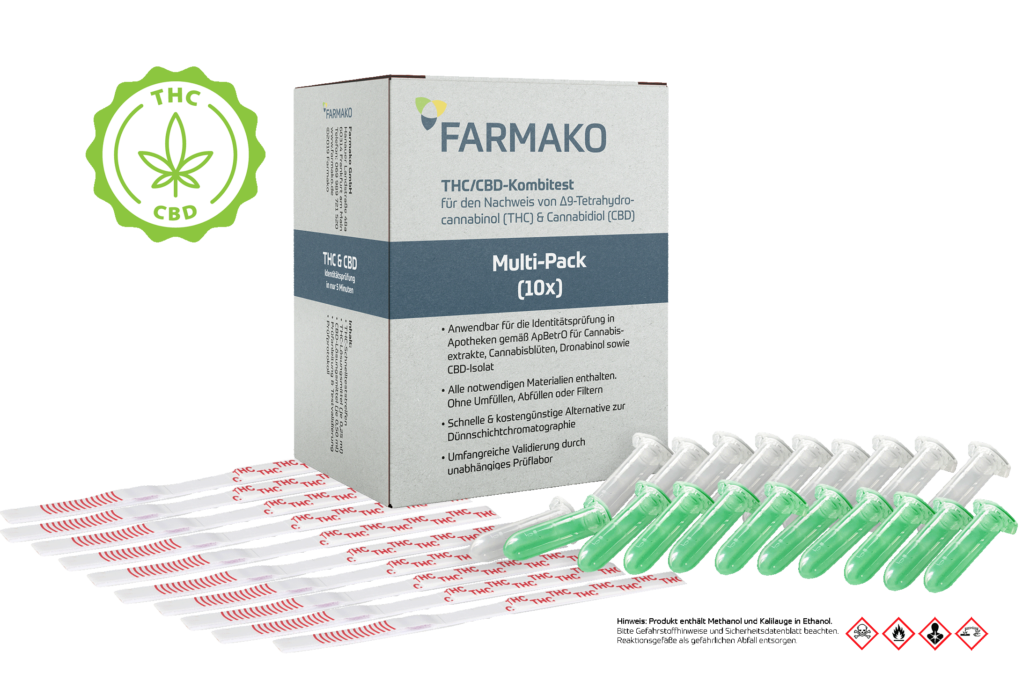The endocannabinoid system
The endocannabinoid system (ECS) is an endogenous receptor system consisting of receptors, endogenous ligands (endocannabinoids) and enzymes responsible for the synthesis of endocannabinoids.

THE ENDOCANNABINOID SYSTEM
The ECS inhibits the release of a wide variety of neurotransmitters, which regulates a wide variety of processes. This regulatory effect extends across the central nervous system, cardiovascular system, gastrointestinal system, musculature, bones, skin and immune system. Due to the wide distribution of the two ECS receptors identified so far, CB1R and CB2R, the greatest challenge is to clearly quantify and localize their influence.
Following the discovery of Δ9tetrahydrocannabinol (THC) as the active ingredient of Cannabis Sativa L. and the associated receptors of the endocannabinoid system, it was clear that endogenous ligands most likely existed. In 1992, a breakthrough was made and the first endogenous endocannabinoid was discovered, anandamide (AEA, also: N-arachidonoylethanolamide), and three years later another, 2-arachidonoylglycerol (2-AG). These endocannabinoids have a modulatory effect via retrograde signal transduction. Due to their lipophilic properties, they cannot be stored in vesicles and must first be synthesized and then released into the synaptic cleft following an increase in intracellular calcium levels. At the presynaptic cell, they bind to one of two identified endocannabinoid receptors: CB1r and CB2r. This triggers inhibition of the neurotransmitters of the presynaptic cell, inhibiting further signal transmission. Table 1: Neurotransmitters under control of the endocannabinoid system
| Neurotransmitter | Associated Disorders |
| Exciting | |
| Glutamate | Epilepsy, nerve cell death due to ischemia and hypoxia (e.g. stroke, ...craniocerebral trauma, nerve gas damage)... |
| Inhibitory | |
| γ-Aminobutyric acid (GABA) | Disorders of the function of the spinal cord, epilepsy |
| Glycine | Hyperekplexia and other syndromes with increased jumpiness |
| Monoamine | |
| Noradrenaline | Autonomous Homeostasis |
| Serotonin | Depression, Anxiety, Migraine, Vomiting |
| Dopamine | Parkinson's, schizophrenia, vomiting, epiphyseal hormones, drug addiction. |
| Acetylcholine | Neuromuscular Disorders, Autonomic homeostasis (heart rate, blood pressure), Dementia, Parkinsonism, Epilepsy, Sleep-Wake-Rhythm |
| Neuropeptides (endorphins, enkephalins) | Pain, Movement, neural development, anxiety |
Table 2: Endocannabinoids
| Ligands | Partialagonist | Fullagonist |
| Anandamide (AEA) | CB1, CB2 | TRPV1 |
| 2-Arachidonylglycerol (2-AG) | - | CB1r, CB2r |
Receptors - CB1 and CB2 [1,2]
Two receptors, CB1r and CB2r, have already been identified as endocannabinoid receptors, while others have not yet been attributed this status. Vanilloid VR1 receptor, "orpan" G-protein coupled receptor GPR55 or peroxisome proliferator-activated receptors (PPAR) have been shown to have affinity for AEA, but there is controversy as to whether these receptors should be included in the CBR family.
CB1 receptors are mainly found in the nervous system, but not exclusively as has long been assumed. CB1 receptors are also found in the periphery (Table 3)[3,4,5]. Remarkable in this case is that CB1 receptors are particularly rarely found in life-relevant processes, which can be explained by the inhibitory function of endocannabinoids, especially in evolutionary terms, and explains a generally lower mortality rate than, for example, with opiates (inhibition of respiratory regulation) [6]. CB1 is mainly found on axon terminals of presynaptic cells and has already been found on astrocytes and microglia in addition to neurons [6,7].
CB2 receptors have so far been found mainly on immune cells, but these receptors are also suspected to be present on various other organs (see Table 3). For a long time it was unclear whether CB2 receptors were also found on neurons. However, as it turned out, the lack of prevalence on brain cells was due to the fact that the antibodies used for identification were too non-specific, as the expression is much smaller than that of CB1. [1,2]
| Receptor | Localization | |||
| CB1 | ||||
| High density | Basal Ganglia | |||
| substantia nigra | ||||
| Hippocampus | ||||
| olfactory bulb (bulbus olfactorius) | ||||
| Cerebellum | ||||
| Moderate density | cerebral cortex | |||
| Forebrain regions | Septum | |||
| Amygdala | ||||
| Hypothalamus | ||||
| Parabrachial nuclei of the brain stem | ||||
| nucleus solitarius | ||||
| posterior horn of the spinal cord | ||||
| Low density | Areas with high relevance for life-sustaining processes (e.g. Medulla oblongata) | |||
| Adrenal gland, fat cells, heart, lungs, liver, spleen, pancreas, gastrointestinal tract, mouth, eye, skin, prostate, uterus, ovary, testis.., bone, vascular endothelium and other tissues. | ||||
| CB2 | ||||
| High density | Macrophages | |||
| T lymphocytes (CD4+ and CD8+) | ||||
| B lymphocytes | ||||
| Natural killer cells | ||||
| Monocytes | ||||
| neutrophil granulocytes | ||||
| Microglia | ||||
| Suspected | Endothelial cells of the lung | |||
| Vascular Structures | ||||
| Spleen | ||||
| Skin | ||||
| Bones | ||||
| Gastrointestinal tract | ||||
| Reproductive Organs & -tissue | ||||
| Enteric (intestinal) nervous system | ||||
1] Kano M, Ohno-Shosaku T, Hashimotodani Y, Uchigashima M, Watanabe M (2009) Endocannabinoid-mediated control of synaptic transmission. Physiol Rev 89 (1): 309
[2] Castillo PE, Younts TJ, Chavez AE, Hashimotodani Y (2012) Endocannabinoid signaling and synaptic function. Neuron 76 (1): 70-81. doi: 10.1016/j.neuron.2012.09.020
[3] Galiegue S, Mary S, Marchand J, Dussossoy D,Carriere D, Carayon P, Bouaboula M, Shire D, Fur G,Casellas P (1995) Expression of central and peripheral cannabinoid receptors in human immune tissues and leukocyte subpopulations. The FEBS J 232 (1): 54-61
[4] Kendall DA, Yudowski GA (2016) Cannabinoid receptors in the central nervous system: their signaling and roles in disease. Frontiers in cellular neuroscience 10
[5] Garcia AB, Soria-Gomez E, Bellocchio L, Marsicano G (2016a) Cannabinoid receptor type-1: breaking the dogmas. F1000Research 5
[6] Hu SS-J, Mackie K (2015) Distribution of the endocannabinoid system in the central nervous system. In: Endocannabinoids. Springer, pp 59-93
[7] Busuets-Garcia A, Bains J, Marsicano G (2017) CB1 Receptors signaling in the Brain: Extracting Specificity from Ubiquity. Neuropsychopharmacology. doi: 10.1038/npp.2017.206
[8] Atwood BK, Mackie K (2010) CB2: a cannabinoid receptor with an identity crisis. Br J Pharmacol 160(3): 467-47

